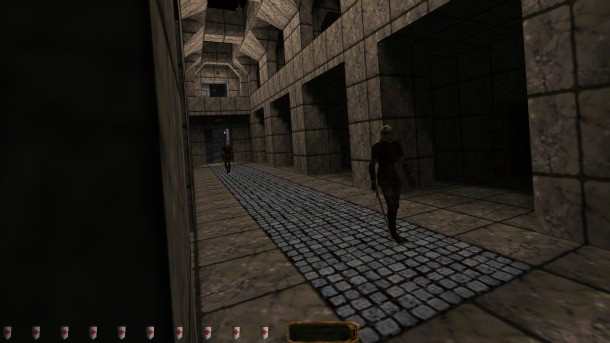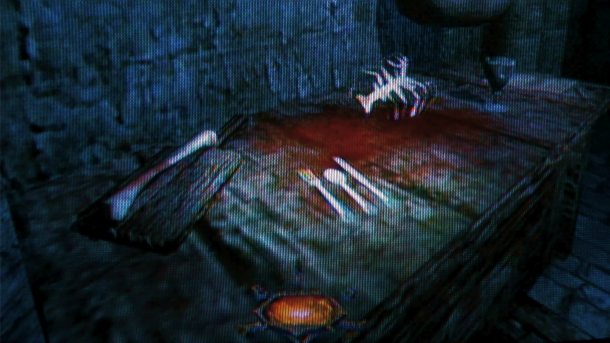Please support Game Informer. Print magazine subscriptions are less than $2 per issue
Looking Back At Thief, A Series That Defined The Stealth Genre

Nineteen ninety-eight saw the release of two landmarks in the stealth genre. The most notable was Metal Gear Solid, a game that is considered one of the best stealth games in history. However, there was another title that came out shortly after Metal Gear that played an important role in defining the stealth genre. This was Thief: The Dark Project by Looking Glass Studios. Unlike other games that have heavy stealth components, such as Deus Ex, Tenchu, and even Assassin’s Creed, stealth is the only way to progress through Thief: The Dark Project and its two sequels, Thief II: The Metal Age, and Thief: Deadly Shadows. With Square Enix and Eidos-Montreal working on a new game in the series and other current games like Dishonored that seem to draw inspiration from the project, we thought it was time for a look back at the landmark series. [This article was originally published on July 26, 2012]
In Thief: The Dark Project, players are cast as Garrett, a master thief who uses wits and guile to survive in the underworld of a steampunk city that contains both Victorian style castles and sophisticated electronic alarm systems. Garrett is agile, but not powerful or unusually skilled in combat. Because most enemies are too tough to be confronted directly, he must use stealth and cunning to catch them by surprise.
However, guards and traps aren’t the only hazards. In Thief, light and sound can be as deadly as any blade. Guards will detect any disturbance, unless the player is hidden in the shadows and completely silent. As formidable as the enemies are, Garrett is an adept master thief, using tricks and tools such as water arrows to extinguish torches or moss arrows to silence the sound of footsteps. Thief is a game of skill and planning in which patience is rewarded and one false step could get you killed.
In addition to the unique gameplay, Thief also has an engrossing story. At the outset, Garrett has one goal: get rich as quickly as possible. His skills at burglary catch the eye of a mysterious nobleman named Constantine, who contracts Garrett to retrieve a mystical gem called the “Eye.” Since the jewel is in the possession of a fanatical sect called The Hammers, this won’t be an easy task. At this point, the gameplay shifts away from dodging guards and grabbing loot to include more combat. As the plot deepens, Garrett must eventually confront the evil god, Trickster, before he destroys the city.

A sequel, Thief II: The Metal Age, was released in 2000. A chief criticism of the first game was that the player should have spent more time thieving and less time combating supernatural forces. As a result, when the team at Looking Glass approached Thief II, they built the levels first and then wrote the story afterwards. This was to make sure that the player would spend a majority of their time fulfilling the role of a master thief. In addition to this new approach to story, Thief II also improved on the basic Thief mechanics. These changes included adding more gadgets, like a thrown spy camera, and smarter enemies, who would investigate when torches suddenly went out. The look and feel of the game was almost identical to the first, but the experience was centered on robbing the rich rather than the more story-driven experience of its predecessor.
When Looking Glass Studios went out of business shortly after releasing Thief II, it looked to be the end of the series. However, the developers from the Thief team who moved to Warren Spector’s Ion Storm were determined that Garrett live on. Ion Storm released Thief: Deadly Shadows in 2004 for Xbox and PC. The game featured vastly updated graphics and mechanics that took the best parts of Thief and made them better. For example, the point-and-click style of lock picking from the first two games was replaced with a minigame similar to that of Fallout 3. Still, because the game featured a more story-driven structure, similar to the first one, it is not as fondly remembered by fans of the series as The Metal Age. But there is one level in Deadly Shadows that stands out in the minds of most fans of the series. In the level “Robbing the Cradle,” Garrett breaks into a hybrid orphanage and insane asylum and is confronted by the ghosts of the inmates that it housed. It is one of the scariest levels in video game history.

Still, it was not enough to make most fans appreciate Deadly Shadows as much as the first two games. Even so, there’s a lot to recommend about this third installment. Deadly Shadows takes the strong elements of its predecessors and updates them with better graphics, AI, and other technological advancements.
Regardless of how the series changed throughout the years, it is the fundamental gameplay established in the first game that has made the series so enjoyable. In a world where stealth has been relegated to an option in games, it’s refreshing to play a game that remains so strongly focused on the core experience of sneaking through the dark.
[Update]
We've since pulled back the curtain on Eidos-Montreal's reboot of the Thief series in issue #240. Be sure to check out the story for the details of Garrett's return and visit the hub to learn more about the project.











